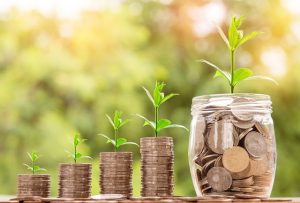 Assets to have in your 20s are a crucial consideration for each one. For those above the 20s, these assets extend to the 40s, so it’s an article-worthy reading. As you plan for your future, building the right kind of assets is essential to achieving financial stability and success. Over the next decade, these four types of assets can help you grow wealth and secure your financial independence. Depending on your efforts, you might reach these goals in 5, 10, 20, 30, or 40 years. Let’s explore each asset, starting with the most accessible and ending with the most valuable.
Assets to have in your 20s are a crucial consideration for each one. For those above the 20s, these assets extend to the 40s, so it’s an article-worthy reading. As you plan for your future, building the right kind of assets is essential to achieving financial stability and success. Over the next decade, these four types of assets can help you grow wealth and secure your financial independence. Depending on your efforts, you might reach these goals in 5, 10, 20, 30, or 40 years. Let’s explore each asset, starting with the most accessible and ending with the most valuable.
Four assets to have in your 20s-40s
Some of the best assets to own in your 20s are Money market funds, stocks, bonds, mutual funds, and ETFs, although there are many other options. In this article, we categorize these assets into four main pieces; soft assets, cash flow assets, skills assets, and physical assets.
1. Soft Assets
Soft assets are investments that aren’t tangible but have the potential to grow in value over time. These include money market funds (MMF), bonds, index funds, equity funds, and government securities. Soft assets are easy to start with, even if you don’t have much capital. For instance, with as little as 100 Kenyan shillings, you can start investing in a money market fund. Soft assets are good assets to have as a person.
If you’re interested in real estate but lack the capital to buy physical property, you can consider Real Estate Investment Trusts (REITs), which allow you to invest in real estate without owning buildings. These soft assets, such as bonds and equities, offer the flexibility of starting small and expanding over time, providing you with a stepping stone to larger investments.
2. Cash Flow Assets
Cash flow is crucial for long-term financial security. Cash flow assets are those that generate a continuous income stream. These could include rental properties, dividend-paying stocks, or businesses that give you monthly or annual returns. The key is ensuring that the assets you own consistently put money into your pocket. Having good cash flow assets can position yourself in a better place to help others financially.
While building wealth, focus on acquiring assets that generate cash rather than holding non-income-generating properties. Owning property or other assets that don’t bring in regular income can leave you “asset-rich but cash-poor.” Therefore, always prioritize investments that provide ongoing cash flow, especially if you’re approaching retirement or need stable income.
3. Skill Assets
Your skills are one of your most valuable assets. Whether it’s freelance writing, graphic design, web development, interior design, or artistic abilities, the skills you develop will stay with you throughout your life. Unlike physical assets, skills cannot be lost or taken away. They empower you to earn income, adapt to changing job markets, and create opportunities for financial growth.
In the digital age, where data and information are highly valuable, having the right skills can set you apart from others. Constantly learning and improving your skills is a 100% investment in yourself that guarantees returns. Whether through formal education or self-study, honing your skills makes you a more valuable asset in the marketplace.
4. Real Estate or Physical Assets
Lastly, in your late years such as your 40s, consider acquiring real estate or other physical assets. While it might take time to accumulate enough money to buy a property, investing in real estate offers long-term financial benefits. Real estate appreciates and can generate rental income, making it a reliable investment. However, it is important to time your investment wisely and ensure that it aligns with your financial goals.
For example, instead of buying land in remote areas with no clear plan for its future use, invest in properties that will generate income or that you can develop shortly. Avoid speculative buying without a clear strategy. If you plan to own land or property, have a timeline and purpose for your investment to ensure it contributes to your financial growth.
A final word on assets to have in your 20s
In the next 10 years, focusing on these four key assets—soft assets, cash flow assets, skill assets, and real estate—will position you for financial success since they are some of the best assets to have. Begin by building soft assets, grow your cash flow, invest in developing your skills, and finally, aim to acquire physical assets that align with your long-term goals. As you accumulate wealth, remember that financial independence is not achieved overnight but through consistent, informed investment in these areas.
Join the community
Is your preferred course marketable? Do not invest your time and money in "useless courses". Your future matters to us a lot. Subscribe to our newsletter for curated articles on the marketability of each course to help you make informed educational and career choices. Join now!
